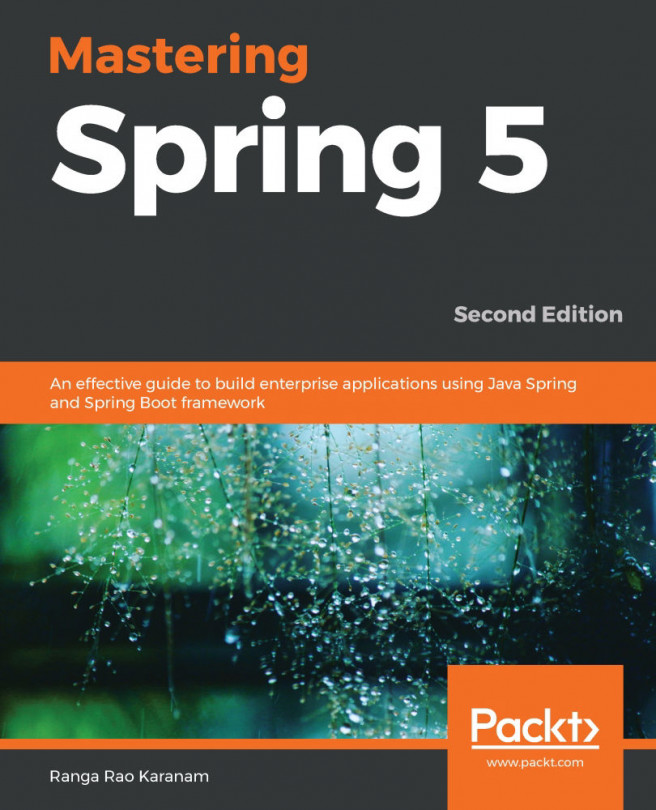Using the command-line runners
With our basic application skeleton ready, let's add some meat to the bones by making our application do something.
Let's start by first creating a class named StartupRunner. This will implement the CommandLineRunner interface, which basically provides just one method: public void run(String... args) --that will get called by Spring Boot only once after the application has started.
How to do it...
- Create the file named
StartupRunner.javaunder thesrc/main/java/com/example/bookpub/directory from the root of our project with the following content:
package com.example.bookpub;
import com.example.bookpub.repository.BookRepository;
import org.apache.commons.logging.Log;
import org.apache.commons.logging.LogFactory;
import org.springframework.beans.factory.annotation.Autowired;
import org.springframework.boot.CommandLineRunner;
import org.springframework.scheduling.annotation.Scheduled;
public class StartupRunner implements CommandLineRunner {
protected final Log logger = LogFactory.getLog(getClass());
@Override
public void run(String... args) throws Exception {
logger.info("Hello");
}
}- After we have defined the class, let's proceed by defining it as
@Beanin theBookPubApplication.javaapplication configuration, which is located in the same folder as our newly createdStartupRunner.javafile as follows:
@Bean
public StartupRunner schedulerRunner() {
return new StartupRunner();
} How it works...
If we run our application again, by executing $ ./gradlew clean bootRun, we will get an output that is similar to the previous one. However, we will see our Hello message in the logs as well, which is as follows:
2017-12-16 21:57:51.048 INFO ---
com.example.bookpub.StartupRunner : HelloEven though the program will get terminated on execution, at least we made it do something!
Command-line runners are a useful functionality to execute the various types of code that only have to be run once, after startup. Some also use this as a place to start various executor threads, but Spring Boot provides a better solution for this task, which will be discussed at the end of this chapter. The command-line runner interface is used by Spring Boot to scan all of its implementations and invoke each instance's run method with the startup arguments. We can also use an @Order annotation or implement an Ordered interface so as to define the exact order in which we want Spring Boot to execute them. For example, Spring Batch relies on the runners to trigger the execution of the jobs.
As the command-line runners are instantiated and executed after the application has started, we can use the dependency injection to our advantage to wire in whatever dependencies we need, such as datasources, services, and other components. These can be utilized later while implementing run.
Note
It is important to note that if any exception is thrown in the run(String... args) method, this will cause the context to close and an application to shut down. Wrapping the risky code blocks with try/catch is recommended to prevent this from happening.





































































